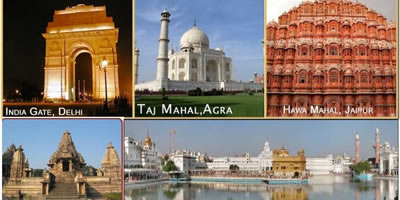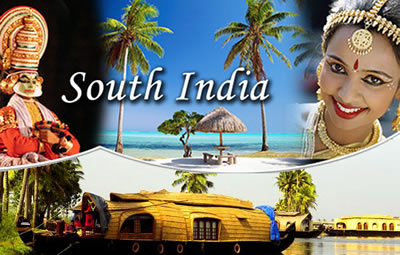Difference between North and South India
Key Difference: North India constitutes as the northern part of India. It incorporates the six North Indian states of Punjab, Jammu & Kashmir, Delhi, Haryana, Himachal Pradesh, Uttarakhand, as well as the Union Territory of Chandigarh. South India constitutes as the southern part of India. It incorporates. It incorporates the states of Telangana, Andhra Pradesh, Karnataka, Tamil Nadu, Kerala as well as the union territories of Lakshadweep and Puducherry.
 India is a vast and enormous country. It is the seventh largest country in the world in terms of area, and the second largest country in terms of population with over 1.2 billion people residing in the country. As there are so many people living in such a large area, it is only understandable that there would be some cultural differences within the regions.
India is a vast and enormous country. It is the seventh largest country in the world in terms of area, and the second largest country in terms of population with over 1.2 billion people residing in the country. As there are so many people living in such a large area, it is only understandable that there would be some cultural differences within the regions.
India stretches from the Indian Ocean in the south to the borders of China in the north; from Burma and Bangladesh in the east to Pakistan and the Arabian Sea to the west. Overall India has an area of 3,287,590 sq km, which is loosely broken up into regions. North India and South India are two such regions.
As the name suggests, North India constitutes as the northern part of India. It incorporates the six North Indian states of Punjab, Jammu & Kashmir, Delhi, Haryana, Himachal Pradesh, Uttarakhand, as well as the Union Territory of Chandigarh. The states of Rajasthan, Uttar Pradesh, Bihar and Madhya Pradesh are not formally part of North India, but are often culturally and colloquially considered as it.
Geographically, North India constitutes the Indus-Gangetic Plain and the Himalayas. It has part an important historical past, and has acted as the historical centre of the Maurya, Gupta, Pala, Harsha, Mughal, Sur, Maratha, Sikh and British Indian Empires.
South India constitutes as the southern part of India; in all it makes up about 19.31% of India's area. It incorporates. It incorporates the states of Telangana, Andhra Pradesh, Karnataka, Tamil Nadu, Kerala as well as the union territories of Lakshadweep and Puducherry.
 Geographically, South India constitutes two mountain ranges, the Western and Eastern Ghats, and a plateau heartland. Historically, South India has been ruled by numerous kingdoms and has impacted the history and cultures of modern sovereign states such as Sri Lanka, Singapore, the Philippines, Indonesia, Thailand, and Malaysia. South India also played a major role in the Indian British Empire.
Geographically, South India constitutes two mountain ranges, the Western and Eastern Ghats, and a plateau heartland. Historically, South India has been ruled by numerous kingdoms and has impacted the history and cultures of modern sovereign states such as Sri Lanka, Singapore, the Philippines, Indonesia, Thailand, and Malaysia. South India also played a major role in the Indian British Empire.
As compared to the rest of India, South Indian states have registered higher than national average growth over the past three decades. It also ranks the highest in terms of social and economic development in areas such as fertility rate and infrastructure. However, economic disparity, illiteracy and poverty are still major problems in the region. The region is the center for the rapidly growing Information technology industry in the country. Literary and architectural styles differ from the rest of the country as it has been heavily influenced by the French, Portuguese and English.
Comparison between North and South India:
|
|
North India |
South India |
|
States |
Punjab, Jammu & Kashmir, Delhi, Haryana, Himachal Pradesh, Uttarakhand, and the Union Territory of Chandigarh. Might also incorporate Rajasthan, Uttar Pradesh, Bihar and Madhya Pradesh. |
Telangana, Andhra Pradesh, Karnataka, Tamil Nadu, Kerala as well as the union territories of Lakshadweep and Puducherry |
|
Geography |
the Indus-Gangetic Plain, the Himalayas, and the Thar desert |
Two mountain ranges: the Vindhya and Satpura ranges, the Western and Eastern Ghats, and a Deccan Plateau heartland. The Godavari, Krishna, Tungabhadra, Kaveri, and Vaigai rivers are important water sources. |
|
Major Cities |
Delhi, Jaipur, Lucknow, Kanpur, Indore, Bhopal, Patna, Ghaziabad, Ludhiana, Agra |
Chennai, Bengaluru, Hyderabad, Coimbatore, Kochi, Visakhapatnam, Madurai, Vijayawada, Calicut, Mysuru. |
|
Weather |
North Temperate zone, with cool or cold winters, hot summers and moderate monsoons. |
A very tropical climate with the monsoons playing a major part. |
|
History |
Historical centre of the Maurya, Gupta, Pala, Harsha, Mughal, Sur, Maratha, Sikh and British Indian Empires. |
The southern coastline from Karwar to Kodungallur near Kochi was the most important trading shore in the Indian subcontinent. The South Indian Malabar Coast and the people of the Sangam age traded with the Graeco-Roman world, including Phoenicians, Romans, Greeks, Arabs, Syrians, Jews, and Chinese. Dynasties such as Cheras, Cholas, Pallavas, Pandyas, the Satavahanas of Amaravati, Kadambas of Banavasi, Western Ganga Dynasty, Chalukya dynasty of Badami, Western Chalukyas, Eastern Chalukya, Hoysalas, Kakatiya dynasty, and Rashtrakutas of Manyaketha have ruled over South India. |
|
Pilgrimage |
The Hindu pilgrimage centers of Char Dham, Haridwar, Varanasi, Ayodhya, Mathura, Vaishno Devi and Pushkar, the Buddhist pilgrimage centers of Bodh Gaya, Sarnath and Kushinagar, and the Sikh Golden Temple. |
Srirangam, Chidambaram, Kanchipuram, Mahabalipuram, Thiruvannamalai, Tanjore, Madurai, Rameswaram, Sri Kalahasti, Tirupati, Mahalaxshmi, Hampi, Badami, Bhattiprolu, Simhachalam, Pattadakal, Aihole, Belur, Halebidu, Lakkundi, Shravanabelagola |
|
World heritage sites |
Nanda Devi Biosphere Reserve, Khajuraho temples, Hill Forts of Rajasthan, Jantar Mantar (Jaipur), Bhimbetka Caves, Sanchi monuments, Qutb Minar, Red Fort, Agra Fort, Fatehpur Sikri and the Taj Mahal. |
Mallikarjuna temple and Kashi Vishwanatha temple, Group of Monuments at Hampi, Group of Monuments at Pattadakal, Brihadeeswarar temple, Airavateshwarar Temple, Brihadeeswarar Temple, Mahabalipuram, and Western Ghats. |
|
Languages |
Indo-Aryan languages, such as Punjabi, Hindi/Urdu, English, Magahi, Chhattisgarhi, Maithili, Haryanvi, Marwari, Santali, Kashmiri, Mewari, Bundeli, Bagheli, Awadhi, Kumaoni, Garhwali, and various other regional languages. |
Dravidian languages such as Tamil, Malayalam, Kannada, Telugu, Gondi and other minor dialects. |
|
Influenced by |
Muslim, Central Asian and Persian |
Carbon dating on ash mounds associated with neolithic cultures in Southern India date back to 8000 BCE. Resisted against Mughal expansion and British occupation, eventually succumbing to the later. Some regions have been influenced by French, Portuguese and English. |
|
Demographics |
Predominantly of the Indo-Aryan ethno linguistic branch, and include various ethnic groups such as Brahmins, Rajputs, Banias, Jats, Ahirs, Gurjars, Kolis, Khatris, Kambojs and Dalits. |
The largest linguistic groups in South India include the Telugus, Tamils, Kannadigas, and Malayalis. |
|
Religion |
Hinduism is the dominant religion in North India. Other religions practiced by various ethnic communities include Islam, Sikhism, Jainism and Buddhism. |
About 80% of South Indians follow Hinduism. Islam has the second-highest number of followers in the region, with 11%, while 8% follow Christianity. |
|
Dance |
Diverse folk and classical forms, including bhangra of the Punjab, rouf and bhand pather of Kashmir, and kathak of Uttar Pradesh. |
Elaborate dance forms include Koodiyattam, Bharatanatyam, Oyilattam, Karakattam, Kuchipudi, Kathakali, Theyyam, Bhuta Kola, Ottamthullal, Oppana, Kerala Natanam, Mohiniaattam and Yakshagana. |
|
Clothing |
Each state of North India has its own regional forms of clothing:
Punjab/Haryana: Salwar (Punjabi) Suit, Patiala salwar, Punjabi Tamba and Kurta, Phulkari, Punjabi Ghagra Jammu: Kurta/Dogri suthan and kurta/churidar pajama and kurta. Kashmir: Phiran and poots. Himachal Pradesh: Shalwar kameez, Kurta, Churidar, Dhoti and angarkha. |
South Indian women traditionally wear the sari while the men wear a type of sarong, which could be either a white dhoti or a colourful lungi with typical batik patterns. |
|
Cuisine |
|
Primary ingredients are rice, coconut and fish. South Indian cuisine, including Dosa, Idli, Uttapam, Sambar, etc. Andhra Pradesh cuisine is characterised by pickles and spicy curries. Cuisine of Kerela incorporates primarily of Coconut dishes. Hyderabadi cuisine a legacy of the past, is popular for its Biryani. Coffee is quite famous. |
Image Courtesy: spirittourism.com, swantour.com









Add new comment